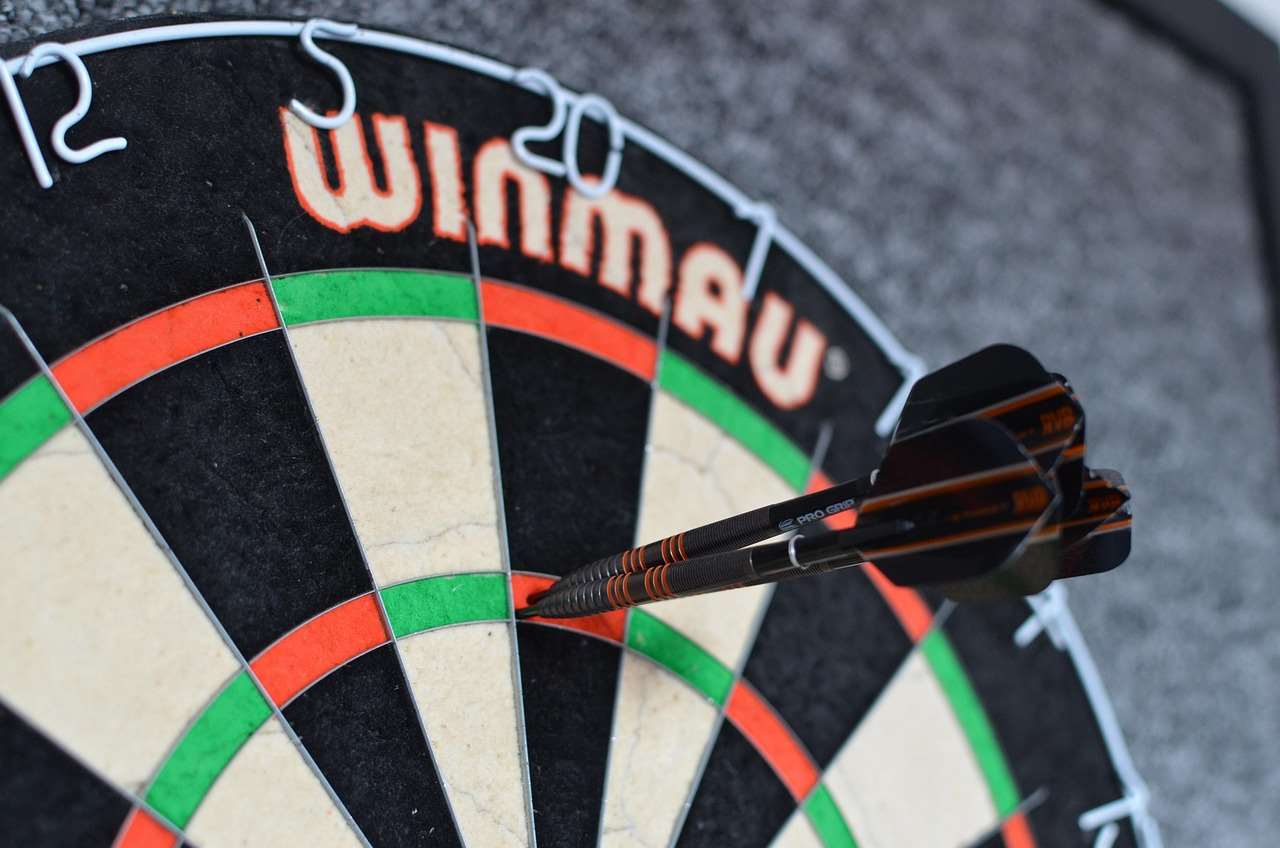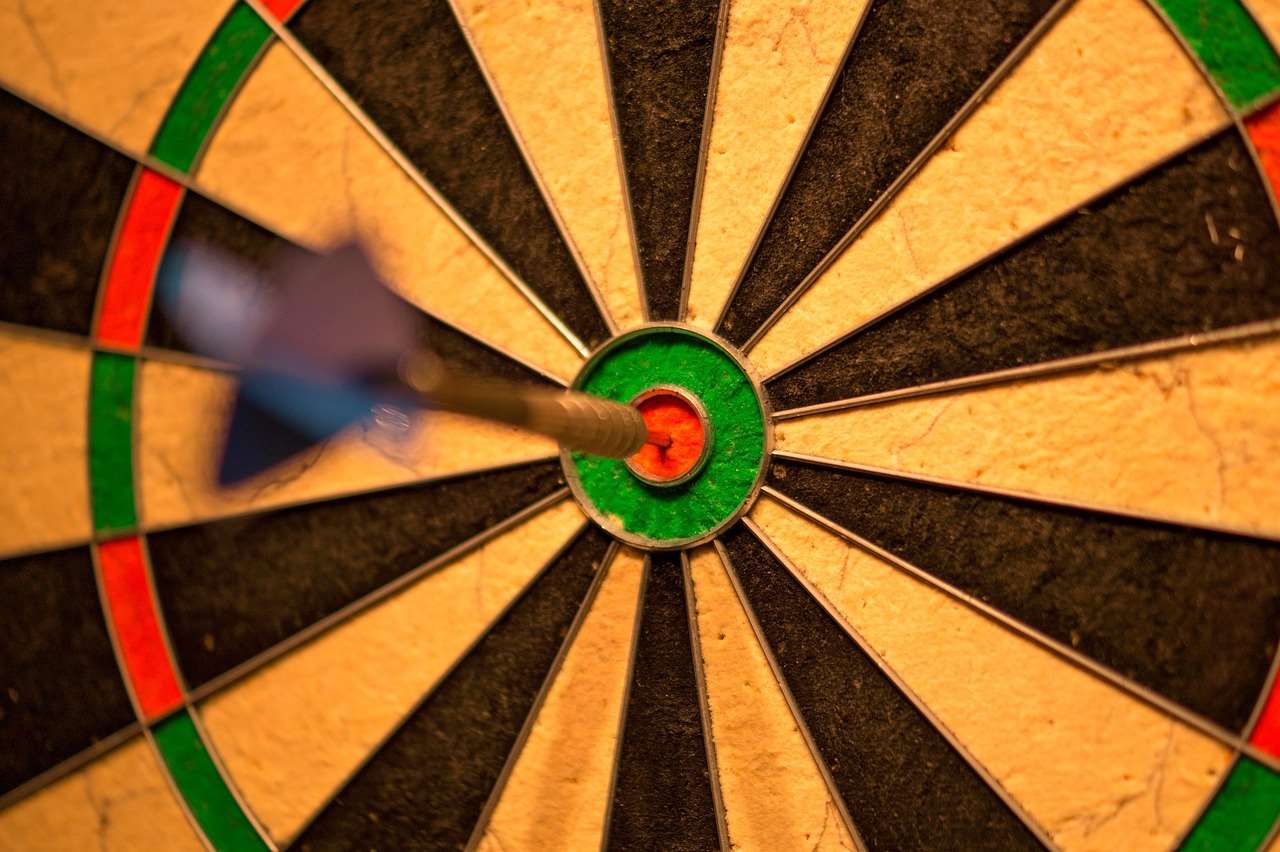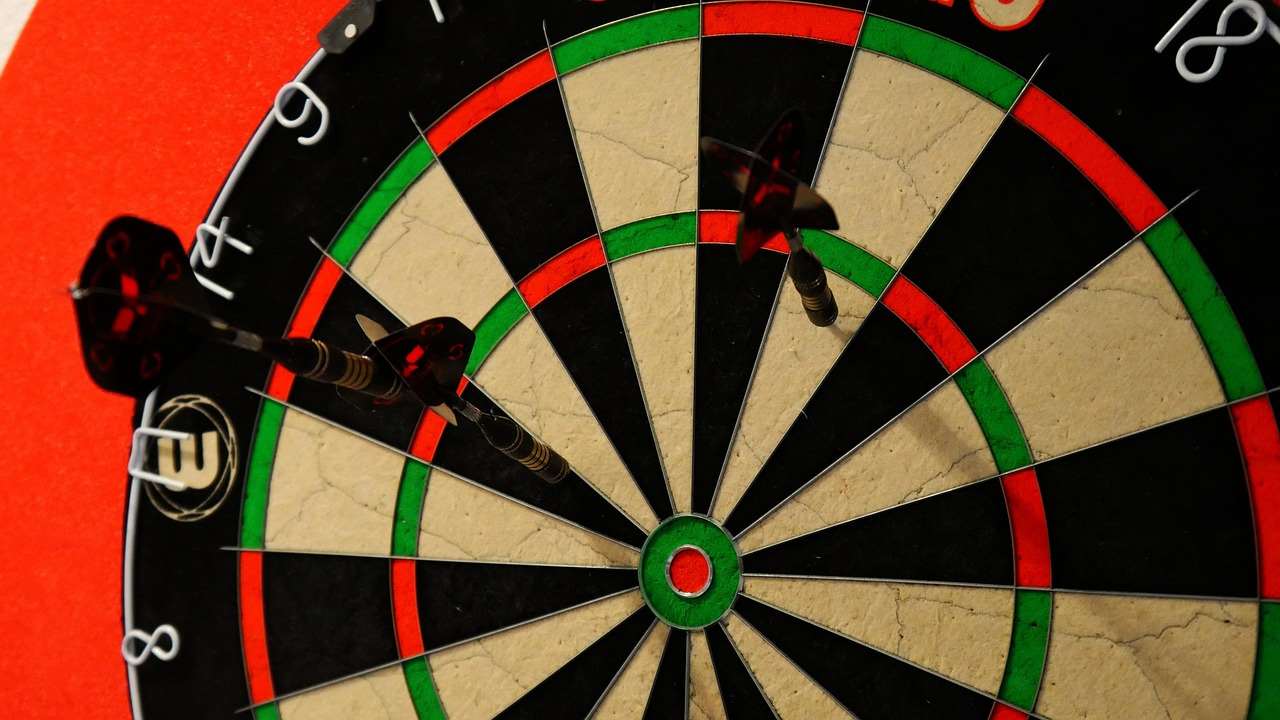The ‘Killer’ darts game, while exciting, often excludes players due to eliminations. **Adapting ‘Killer’ darts rules for more players** involves modifications that maintain engagement and fun for everyone, regardless of skill level. This article explores various adjustments to keep all participants involved longer and enhance the overall experience, covering scoring tweaks, handicap systems, and team-based adaptations.
⚠️ Still Using Pen & Paper (or a Chalkboard)?! ⚠️
Step into the future! The Dart Counter App handles all the scoring, suggests checkouts, and tracks your stats automatically. It's easier than you think!
Try the Smart Dart Counter App FREE!Ready for an upgrade? Click above!
Adapting ‘Killer’ Darts Rules for More Players: Keeping Everyone Engaged
The traditional ‘Killer’ darts game can be a blast, but its rapid elimination process can leave some players watching from the sidelines early on. **Adapting ‘Killer’ darts rules for more players** is essential to ensure a more inclusive and enjoyable experience, especially in social settings or when playing with mixed skill levels. We’ll explore several techniques to modify the game, making it accessible and fun for everyone, even those who might be new to the sport.

Understanding the Traditional ‘Killer’ Game
Before diving into modifications, it’s important to understand the core rules of the traditional ‘Killer’ darts game. Each player selects a number (usually assigned randomly). Players then take turns throwing darts, aiming to hit their number three times to become a “killer.” Once a player is a killer, they aim to hit other players’ numbers, eliminating them from the game if they hit that number three times. The last player standing wins. The inherent problem lies in the quick elimination, potentially leaving less skilled players feeling left out.
The Drawbacks of Traditional Killer
- Early Elimination: Less experienced players are often targeted and eliminated quickly.
- Uneven Skill Levels: The game can be frustrating for beginners playing against seasoned dart players.
- Limited Engagement: Eliminated players are left with nothing to do but watch.
Modifying the Game for Enhanced Participation
Several modifications can address the drawbacks of the traditional game. These modifications aim to extend gameplay, level the playing field, and keep everyone involved. One excellent method involves Modifying rules for mixed-level dart players.
Introducing “Lives” or “Health Points”
Instead of outright elimination, give each player a set number of “lives” or “health points”. For example, each player might start with three lives. When a killer hits their number, instead of being eliminated, they lose a life. Only when they lose all their lives are they out of the game. This allows players more opportunities to stay in the game and improve their skills. This modification significantly enhances player engagement and extends the overall game duration. Consider different numbers of lives depending on the number of participants; larger groups might need fewer lives to prevent excessive game length. This is one example of Alternative darts rules for home play.
Implementing a Handicap System
A handicap system can level the playing field, making it fairer for players of different skill levels. There are several ways to implement this:

- Starting Score: Give less skilled players a head start by awarding them points before the game begins. This is often seen as a crucial approach for **adapting darts rules for beginners**.
- Target Size: Allow less experienced players to target a larger area around their designated number. For example, instead of only hitting the 20, they can hit the 5 or 1 to count as a hit.
- Life Regeneration: Allow less skilled players to regain a life after a certain number of rounds without being hit.
Carefully consider how the handicap is determined to ensure it’s fair and balanced. Too much of a handicap can make the game unfair in the opposite direction, while too little may not be effective.
Team-Based ‘Killer’
Team play is an excellent way to foster collaboration and reduce individual pressure. Divide players into teams, and each team selects a number. When a killer hits a member of the opposing team’s number, the entire team loses a life (or point). The last team standing wins. This approach encourages teamwork and keeps everyone involved, even if they are not individually skilled. It’s also a great approach when **adapting dart game rules for children**.
The “Resurrection” Rule
Introduce a “resurrection” rule, allowing eliminated players to re-enter the game under certain conditions. This could involve completing a challenge, such as hitting a specific number or scoring a certain number of points in a single turn. This keeps eliminated players engaged and adds an element of surprise and excitement to the game. This is another aspect of Fun dart game variations with modified rules.
Limited “Killer” Status
Instead of allowing players to remain “killers” indefinitely, limit the duration of their killer status. For example, a player might only be a killer for three rounds, after which they revert to being a regular player again. This prevents more skilled players from dominating the game and provides other players with opportunities to become killers and turn the tide.

Adjusting Scoring for Inclusivity
Traditional scoring can be unforgiving. Adapting ‘Killer’ darts rules for more players could encompass simple scoring adjustments that add to the fun and accessibility of the game.
Partial Credit for Near Misses
Instead of only counting hits on the exact number, award partial credit for darts that land close to the target. For instance, if a player is aiming for 20 and hits 1 or 5, they might receive half a point. This encourages players to keep trying and reduces frustration, particularly for those who are still developing their accuracy.
Bonus Points for Specific Achievements
Award bonus points for hitting specific targets, such as the bullseye or hitting three darts in the same number. This adds an extra layer of challenge and excitement to the game, and provides opportunities for less skilled players to score points even if they are not consistently hitting their target number. In some situations, it might even be beneficial to consider How to make darts fairer with handicap rules.
Strategies for Implementing Rule Modifications
Successfully implementing rule modifications requires careful planning and communication. Here are some tips:
Clearly Communicate the Rules
Before starting the game, clearly explain the modified rules to all players. Ensure everyone understands how the new rules work and how they affect gameplay. Provide written instructions or diagrams if necessary. Clear communication is crucial for preventing confusion and ensuring that everyone is on the same page. These are **basic darts fundamentals for beginners**.
Test and Refine
Experiment with different rule modifications and observe how they affect gameplay. Gather feedback from players and adjust the rules as needed. The goal is to find a set of rules that are fair, engaging, and enjoyable for everyone. Don’t be afraid to make changes based on player feedback. It may take some trial and error to find the perfect balance.
Consider the Skill Level of the Players
When implementing rule modifications, consider the skill level of the players. If you are playing with a group of experienced dart players, you may not need to make as many modifications. However, if you are playing with a group of beginners, you may need to make more significant adjustments to ensure that the game is accessible and enjoyable for them.

Creating a Positive and Inclusive Environment
**Adapting ‘Killer’ darts rules for more players** is not just about modifying the gameplay mechanics; it’s also about creating a positive and inclusive environment where everyone feels welcome and supported.
Encourage Sportsmanship
Promote good sportsmanship among players. Encourage them to support and encourage each other, regardless of skill level. Remind players that the goal is to have fun and enjoy the game, not just to win. Celebrate successes and offer encouragement after misses.
Offer Tips and Advice
Provide tips and advice to less experienced players. Offer guidance on throwing techniques, aiming strategies, and other aspects of the game. Sharing your knowledge can help them improve their skills and enjoy the game more. Remember that everyone starts somewhere, and a little encouragement can go a long way.
Celebrate Participation
Focus on celebrating participation rather than just winning. Acknowledge and appreciate the efforts of all players, regardless of their skill level. Offer positive feedback and encouragement to those who are struggling. Emphasize the social and recreational aspects of the game. The whole idea of Creative dart rules for parties and social gatherings hinges on participation and enjoyment.
Advanced Adaptations for Experienced Players
While the focus has been on making the game more inclusive for less skilled players, **adapting ‘Killer’ darts rules for more players** can also involve adding complexity for advanced players.
Introducing New Targets
Introduce new targets or challenges that add an extra layer of difficulty to the game. For example, players might have to hit the bullseye or a specific double to become a killer. This adds an element of skill and precision to the game, and provides experienced players with new challenges to overcome.
Implementing Point Penalties
Implement point penalties for certain actions, such as hitting the wrong number or throwing darts out of turn. This adds an element of risk and strategy to the game, and requires players to be more careful and deliberate with their throws.

Adding “Special Powers”
Introduce “special powers” that players can use to gain an advantage in the game. For example, a player might be able to steal a life from another player or force another player to skip a turn. This adds an element of strategy and unpredictability to the game, and can create exciting and memorable moments.
Conclusion
**Adapting ‘Killer’ darts rules for more players** is vital for fostering a fun and inclusive dart-playing environment. By implementing modifications like lives, handicap systems, team-based play, and scoring adjustments, you can ensure that everyone stays engaged and enjoys the game, regardless of their skill level. Remember to clearly communicate the rules, test and refine them based on player feedback, and prioritize creating a positive and supportive atmosphere. So gather your friends, adapt the rules, and get ready for a thrilling and inclusive game of ‘Killer’ darts! Try these techniques and share your results! And if space is tight consider Adapting darts rules for small spaces: tips and tricks.
Hi, I’m Dieter, and I created Dartcounter (Dartcounterapp.com). My motivation wasn’t being a darts expert – quite the opposite! When I first started playing, I loved the game but found keeping accurate scores and tracking stats difficult and distracting.
I figured I couldn’t be the only one struggling with this. So, I decided to build a solution: an easy-to-use application that everyone, no matter their experience level, could use to manage scoring effortlessly.
My goal for Dartcounter was simple: let the app handle the numbers – the scoring, the averages, the stats, even checkout suggestions – so players could focus purely on their throw and enjoying the game. It began as a way to solve my own beginner’s problem, and I’m thrilled it has grown into a helpful tool for the wider darts community.